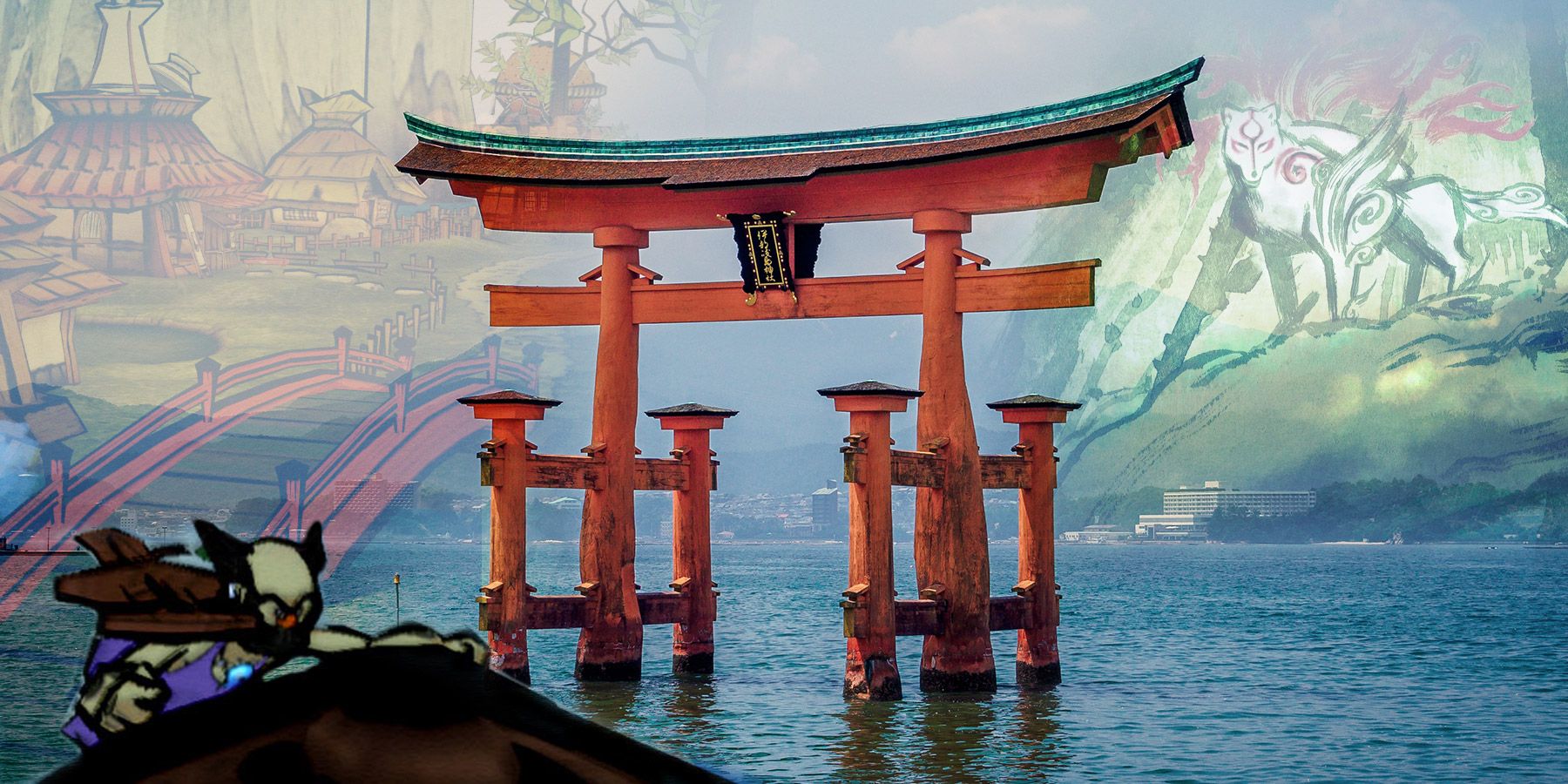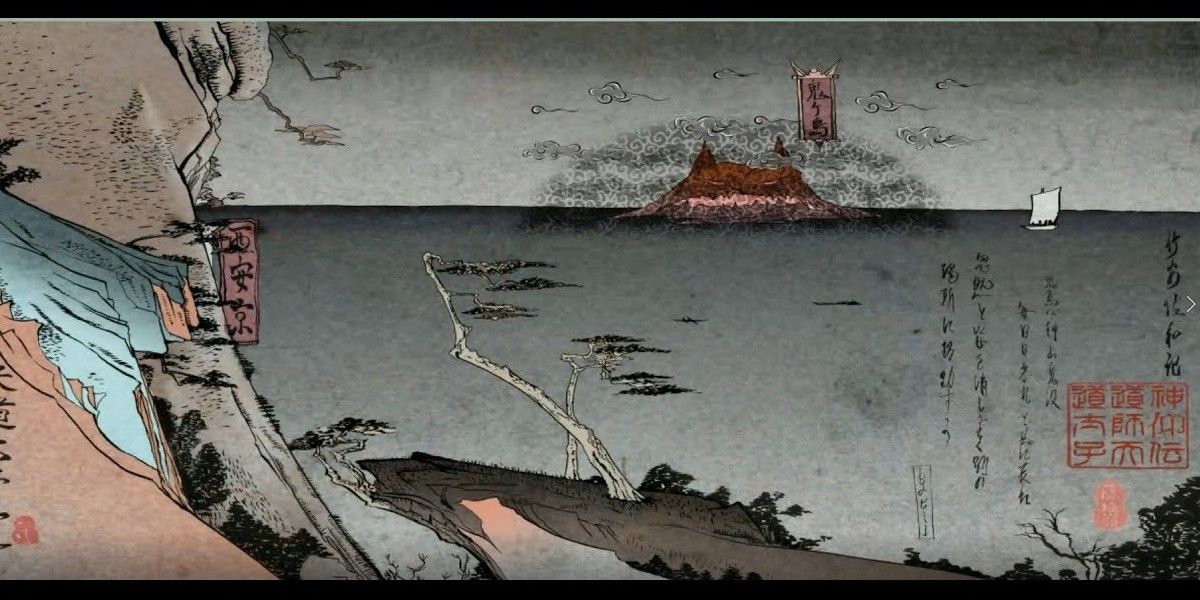Okami is fondly remembered do to its unique paint-style graphics, memorable characters, epic story, and distinctive battle mechanics that utilize a paintbrush. The director of the game, Hideki Kamiya, recently mentioned that he hopes to one day make a sequel, which has gotten many fans excited. As kids, players often thought of Okami as a fantasy world, but older fans now know that Nippon is actually ancient Japan and that much of that games' content is inspired by Japan's polytheistic religion of Shintoism.
Part of what makes Shinto so special is that it originated in Japan and is deeply tied to the nation's history and culture. The religion has strong beliefs in terms of harmony with nature and purity, which is exemplified in much of Okami. Like any religion, Shintoism has characters and stories as well and these are seen everywhere in the game, from its villains to its heroes and minor NPCs.
Characters In Okami From Shintoism
Of course, the first character from Shintoism is a major one, Amaterasu herself. She is the protagonist of Okami and the sun goddess in the form of a wolf. In Shintoism, she is also the sun goddess and one of the biggest deities of the religion, with her shrine being one of the holiest sites in the country, the Grand Shrine of Ise. In terms of being a wolf though, that is an aspect totally original to the video game. There are tons of stories about her, such as being the sister of the moon god, Tsukuyomi, and the storm god, Susanoo. One of the most popular stories is one in which Amaterasu sealed herself inside a cave and many gods had to lure her out by throwing a party. In Shintoism, it is also believed the first Emperor of Japan, Jimmu, was a descendant of Amaterasu.
Susano from the game is based on Susanoo from Shintoism. While he is not Amaterasu's brother in the game, he still has plenty of commonalities with the mythology. In Shintoism, Susanoo killed the eight-headed serpent Orochi all by himself and, just like in the game, got the serpent drunk on sake to do it. Even the weapon the player receives from defeating Orochi, Kusanagi, is from the real Shinto legend, and Susanoo did give it to Amaterasu as a gift in the mythos.
Kushi is based on Kushinadahime, who plays a similar role both in the game and Shintoism. Both were rescued by Susano from Orochi. However, Kushinadahime is one of a couple of wives while Kushi and Susano appear to be monogamous. In Japan, Shinto shrines to her are often paired with Susannoo.
Within Okami, there are the minor characters of Nagi and Nami, who are the ancestors of Susano. They also stem from Shintoism, as their names are short forms of Izanagi and Izanami, the couple that birthed Japan and its many gods. Unlike a lot of other mythologies, the woman is actually associated with death and the man with life. Amaterasu and her brothers were born from Izanagi after he purified himself in a river after visiting Yomi.
Queen Himiko is another example of Shintoism in Okami, but one that is special since she was also a historical figure. While being historical, she is also mythological due to her role as a shamaness as well as queen. There are theories among historians that she may have been the same woman who founded Ise Shrine, which is Amaterasu's main place of worship. Okami seems to have liked this theory, as Himiko in the game has a magic mirror and the woman who founded Ise Shrine enshrined a Sacred Mirror in Ise, which was made by the gods to help lure Amaterasu out of a cave. Himiko is a popular figure in video games, also being in titles such as the 2018 Tomb Raider.
More From Shintoism
Okami is home to many interesting enemies, such as imps, demons, goblins, spiders, and foxes. Almost all of them stem from Shinto beliefs in beings called yokai and kami. These words get translated to demons and gods in anime and video games but do little justice for how they are viewed in Shinto. For example, yokai are supernatural creatures and not associated with evil like demons are in western culture. Japanese kami are not just gods and can include ancestors, historical leaders, and really powerful yokai. Bosses in Okami like the Spider Queen and Ninetails are especially tied to Shintosm's yokai. The spider queen is a type of yokai called a jorogumo, a woman-spider, and ninetails is from kitsune folklore that revolves around foxes with paranormal abilities that are stronger depending on their many tails (with nine being the strongest).
A lot relates to Japan-specific folklore as well, such as Issun being based on a Japanese fairytale about a tiny child who seeks to become a powerful warrior with a needle-like sword. Japan's Tale of the Bamboo Cutter also is in Okami with Mr. Bamboo and Kaguya. The same is true of the Dragon Palace, which stems from the folktale of a boy who is taken to a palace under the sea by a turtle he saved (though in Okami, it is an orca instead of a turtle).
One could likely fill a book with how much Okami stems from Japanese culture, its history, folktales, and religion. These details only touch the surface of what the game has, as Okami is a stunning example of how a video game can put a country's religion, history, and folklore on an international level for others to learn and enjoy. If Kamiya does decide to make a sequel, surely many more characters and creatures based on Japan's mythology will be there.
Okami HD is available now for PC, Nintendo Switch, PlayStation 4, and Xbox One.


.jpg)
